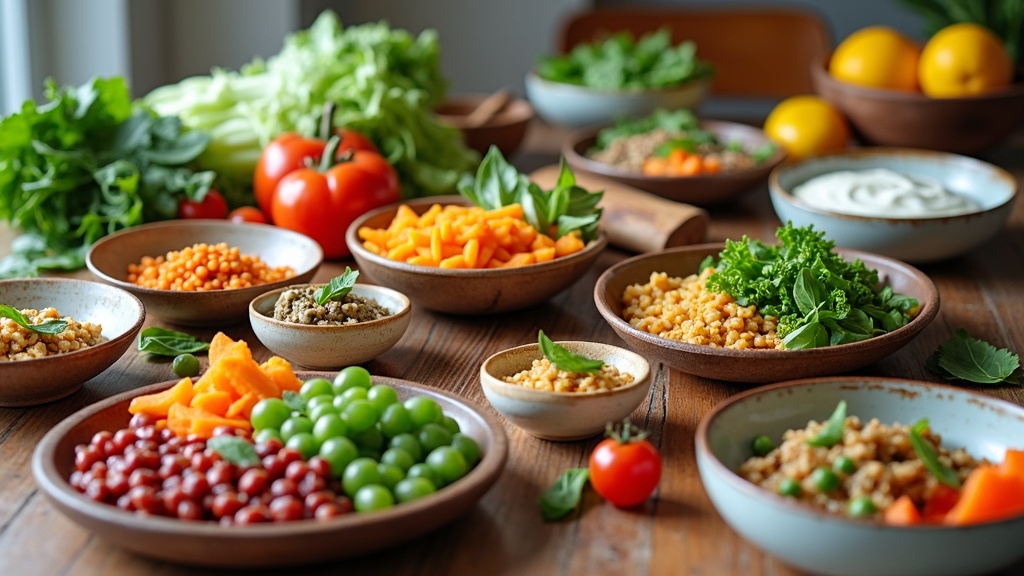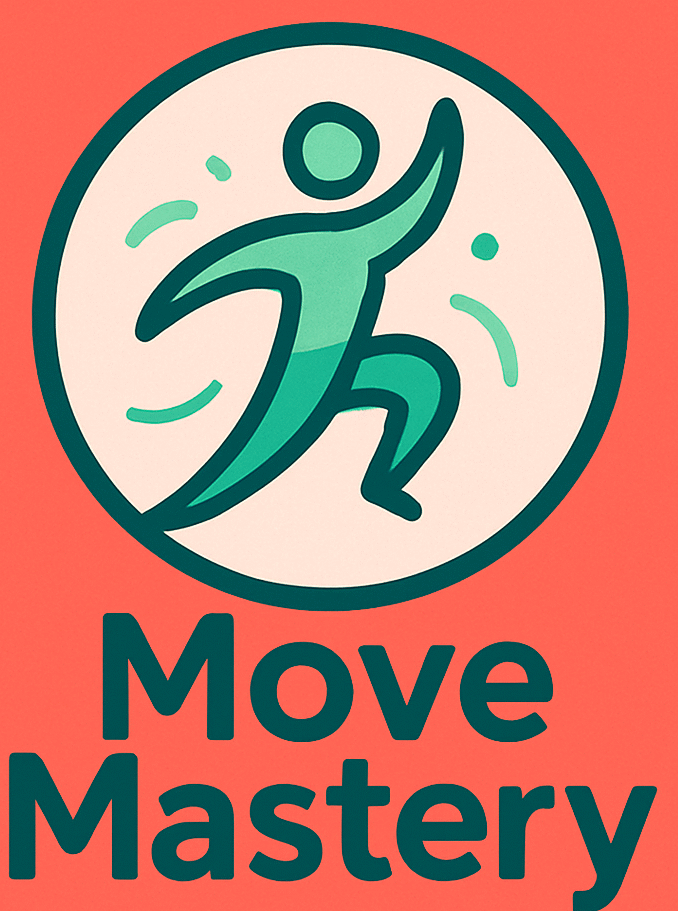 A high-protein meal after bodyweight exercise supports muscle recovery, energy levels, and overall progress. Vegetarians sometimes wonder if it’s possible to get enough protein without animal products. The good news is, plenty of plant-based ingredients can help me easily reach my protein goals while keeping my meals delicious and interesting.
A high-protein meal after bodyweight exercise supports muscle recovery, energy levels, and overall progress. Vegetarians sometimes wonder if it’s possible to get enough protein without animal products. The good news is, plenty of plant-based ingredients can help me easily reach my protein goals while keeping my meals delicious and interesting.
As someone who enjoys bodyweight workouts and wants to keep my plate meat-free, I often experiment with different vegetarian ingredients. Over time, I’ve learned how to build meals that are both easy to make and packed with protein. Even if you’re new to plant-based eating, it’s possible to get all the nutrients needed for effective recovery by making a few simple ingredient swaps and trying out creative recipes.
This article highlights quick, tasty, and high-protein vegetarian recipes perfect for 2025. Each recipe is practical for busy days and helps give my recovery a boost after a good workout session.
Why Protein Matters After Bodyweight Exercises
After a challenging bodyweight workout, my muscles go through tiny tears as they adapt and get stronger. Protein is really important for repairing those muscle fibers and supporting growth. When I eat a high-protein meal after exercise, I often feel less sore and can keep up with consistent workouts. For vegetarians, choosing the right foods makes a big difference. While meat and fish are classic protein sources, eggs, dairy, legumes, nuts, seeds, and soy all offer high levels of protein too. Combining a few of these ingredients ensures a meal is balanced, satisfying, and recovery-friendly.
1. Edamame and Chickpea Protein Salad
One of my favorite post-workout salads features shelled edamame and chickpeas tossed with chopped bell peppers, red onion, spinach, and a simple lemon-tahini dressing. Both edamame and chickpeas deliver plenty of protein, and leafy greens offer extra vitamins and minerals.
How I Make It:
- Combine 1 cup cooked chickpeas and 1 cup shelled edamame in a bowl.
- Add diced bell peppers, red onion, a handful of fresh spinach, and a tablespoon of pumpkin seeds.
- Whisk 1 tablespoon tahini with the juice of half a lemon, a dash of garlic powder, and salt. Pour it over and toss to coat.
This salad fills me up and takes only a few minutes to assemble if I use canned or precooked beans. For added variety, sometimes I swap spinach for arugula or toss in some roasted sweet potatoes.
2. Cottage Cheese and Berry Protein Parfait
Cottage cheese has become really popular in vegetarian circles for its high protein content and versatility. I love layering it with fresh berries, chia seeds, and a sprinkle of granola for a quick, satisfying parfait.
How I Make It:
- Spoon 1 cup of low-fat cottage cheese into a bowl or glass.
- Add a layer of mixed berries—blueberries, strawberries, or raspberries work well.
- Top with 1 tablespoon of chia seeds and a few tablespoons of high-protein granola.
This parfait is a great recovery snack and helps satisfy my sweet tooth while packing in about 20 grams of protein. On chilly days, you can also add a drizzle of honey or a scoop of nut butter for extra flavor and nutrients.
3. Tofu Scramble with Spinach and Nutritional Yeast
Scrambled tofu is my goto vegetarian substitute for eggs. Tofu soaks up any spices, making it easy to customize. I like to include chopped spinach and nutritional yeast for extra nutrients and a cheesy flavor. You can toss in mushrooms, tomatoes, or bell peppers to change up the texture and taste.
How I Make It:
- Crumble 1/2 block of firm tofu into a nonstick skillet over medium heat.
- Add a handful of chopped spinach, 1/4 teaspoon turmeric for color, 1/2 teaspoon garlic powder, and salt to taste.
- Cook for 57 minutes, then sprinkle with 12 tablespoons of nutritional yeast before serving.
I often eat this scramble with whole-grain toast or rolled in a tortilla for a quick wrap. Tofu is a complete protein, so it helps with muscle recovery as well as keeping me full. Feel free to try smoked tofu for a different flavor profile or add avocado on the side for even more nutrients.
4. Lentil and Quinoa Protein Bowls
Lentils and quinoa both offer impressive amounts of protein and fiber. Combining them creates a hearty, nutrentrich meal that works for lunch or dinner after a workout.
How I Make It:
- Prepare 1/2 cup dry lentils (any color) and 1/2 cup quinoa according to package instructions.
- Layer them in a bowl with roasted vegetables like sweet potato, zucchini, and broccoli.
- Drizzle with a dressing made from olive oil, lemon juice, cumin, and black pepper.
Quinoa is one of the few plant foods with all nine essential amino acids. When paired with lentils, this meal packs around 22 grams of protein per serving. If you want to punch up the protein even more, try adding toasted sunflower seeds or a spoonful of hemp hearts on top.
5. Greek Yogurt Power Smoothie
Greek yogurt is a staple for many vegetarian athletes. It’s easy to blend into smoothies and offers calcium, probiotics, and a good dose of protein.
How I Make It:
- Blend 1 cup plain Greek yogurt with 1/2 cup skim milk (or a fortified plant milk for a vegan version), 1 banana, a handful of spinach, and 1 tablespoon almond butter.
- Add ice and blend until smooth.
This smoothie is quick to make and easy to drink right after exercise. I usually add a scoop of protein powder for an extra boost when needed. You can mix in oats or frozen berries for more fiber and to keep the smoothie feeling fresh every time.
Tips for Maximizing Protein in Vegetarian Meals
Getting enough protein as a vegetarian is definitely doable with some practical tips. I always try to:
- Include a mix of legumes, soy products, dairy, seeds, and grains throughout the week.
- Try new ingredients, like seitan or tempeh, which are higher in protein than regular tofu.
- Pair whole grains (like brown rice or whole wheat bread) with beans or lentils to deliver even more essential amino acids.
- Experiment with proteinrich snacks like roasted chickpeas, trail mix with nuts and seeds, or boiled eggs.
If I track my meals, it helps me see where I get the most protein, and I can switch things up if I need to. There are also plenty of handy vegetarian nutrition tools and apps online (like MyFitnessPal) that I use to monitor protein intake and refine my meals. Cooking in batches and meal prepping on weekends can also save time and guarantee I always have a protein-rich option ready after exercise.
How I Adjust My Recipes for Seasons and Budget
I often swap ingredients based on what’s fresh and affordable. Frozen edamame, canned beans, and bulk lentils save both money and time. In winter, I make warm bowls with baked tofu, winter squash, and farro. During summer, I prefer lighter meals with cottage cheese, salads, and quick stir-fries with tofu or tempeh. With just a few basic swaps, it’s easy to keep meals interesting and packed with protein all year long. Shopping at local markets and looking out for weekly specials also helps keep costs down and encourages experimentation with seasonal veggies.
Final Thoughts
Building high-protein vegetarian meals after a bodyweight workout comes down to choosing the right plant-based foods and getting creative in the kitchen. Balancing taste, nutrition, and convenience, these recipes have helped me recover faster, reduce soreness, and stay motivated with my fitness goals. Jumping into new combinations keeps things interesting, making it easy to keep a postexercise nutrition routine that works for me in 2025 and beyond.
Have you tried a high-protein vegetarian recipe after exercise? Feel free to share your favorite combos or meal ideas below!
